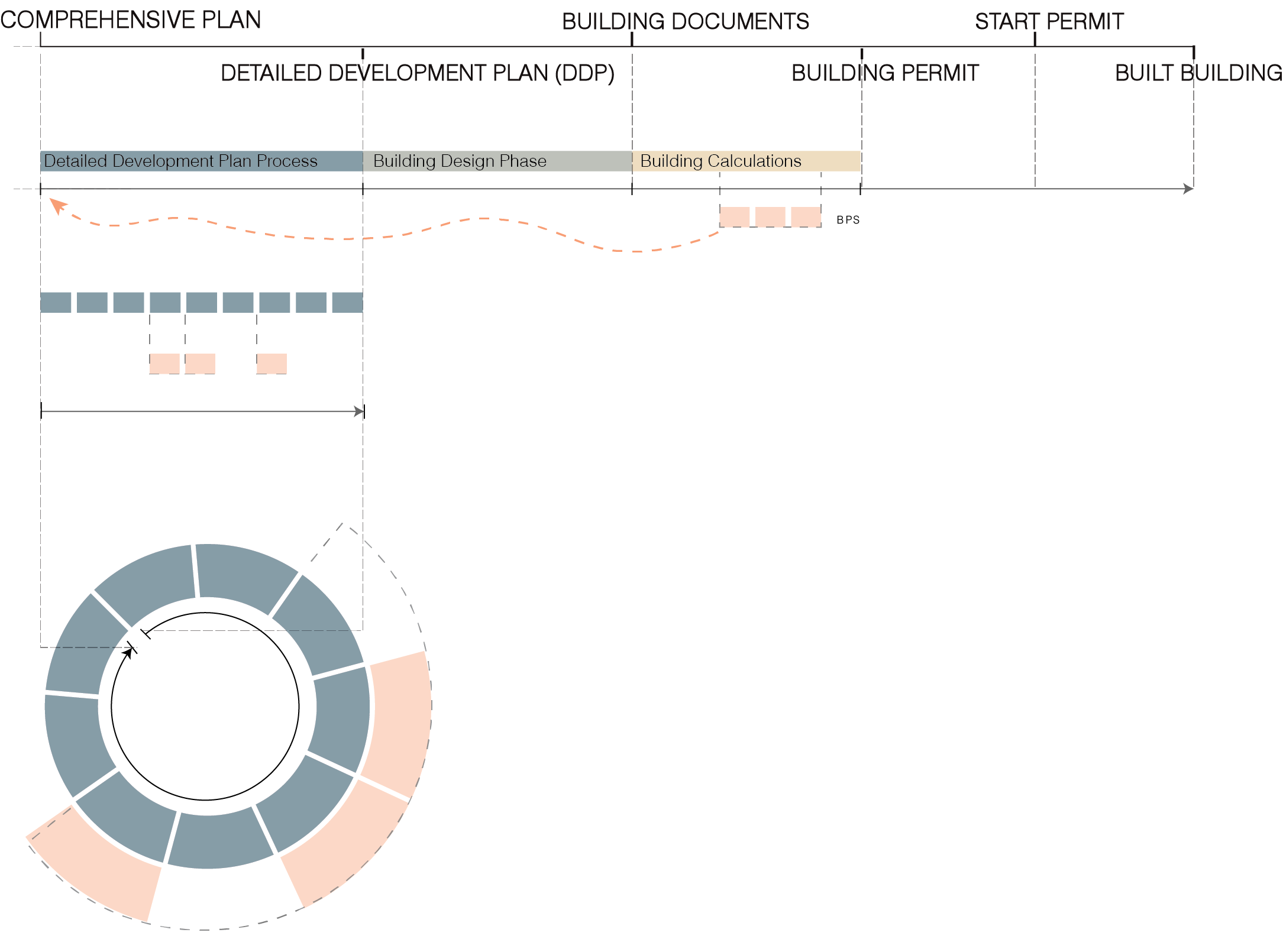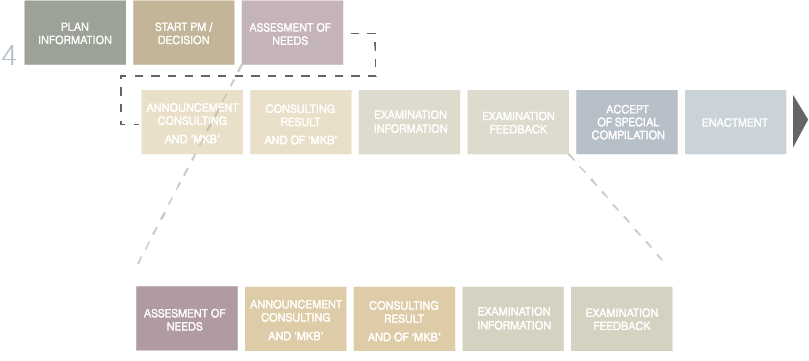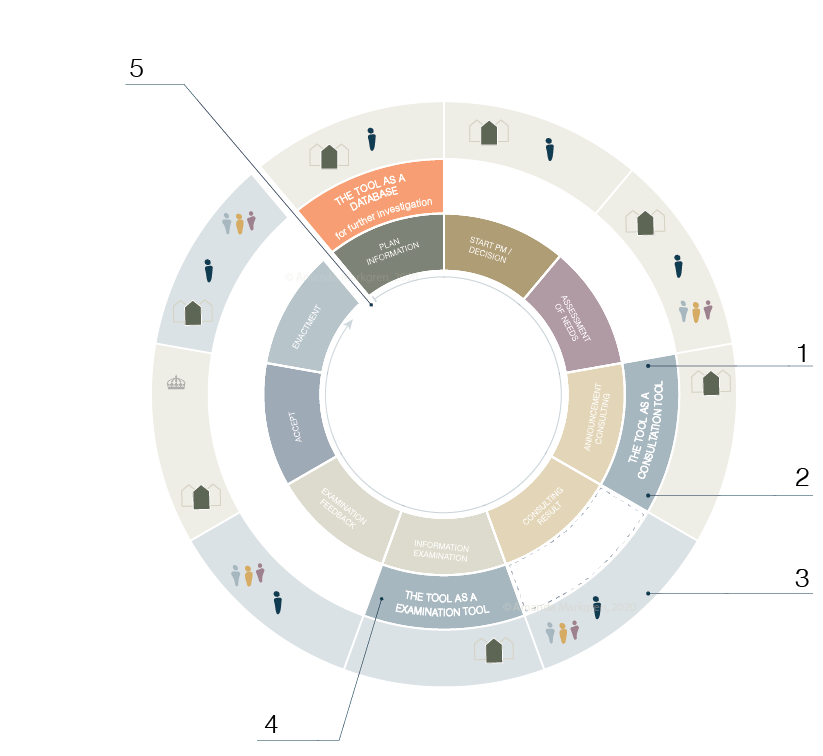INNOVATION OF THE DDP PROCESS

BUILDING PROCESS
SUB-PROCESSES
TOOL CONCEPT
PROCESS CONCEPT
The building process handles many parameters, as a result of this it also contains a lot of sub-processes. The sub-processes in turn handles different areas with different level of detail. The thesis focus, Building Performance Parameters (BPP), are often discussed and analyzed after a first design proposal of the building is drawn up. This means after several of parameters have been set for the prerequisites of the building.
Thus, this thesis proposes a change of perspective and an innovation of the existing building process. This innovation is proposed to happen in the Detailed Development Plan through an implementation of the building performance tool BeDOT in a developed DDP process.
The tool concept for the thesis is to find a way to calculate BPPs in an DDP. And to further develop BeDOT to match the demands found. By placing the analyzation of BPPs in an earlier stage, the process instead gives directives for the shape that helps the performance, instead of giving feedback on an already set model.
The process concept focuses on the implementation of innovation. For this the keywords found have been: change, process, continuity and communication.

The thesis revolves the DDP process, therefor a deeper understanding of the existing process was needed. During the inventory a clear creative part of the process was found (figure below), the creative steps are often the ones with most stakeholders involved. Due to this the identified stages also opens up for collaboration and communication of several disciplines which makes this part of the DDP process ideal for an implementation of innovation.

Additional to the keywords for innovation (shown above), the importance of finding ownership and governance is highlighted throughout the thesis. Therefore, a clear communication between stakeholders is needed. The DDP process is however involving different stakeholders depending on the DDP-areas requirements. There are however four main groups of stakeholders used in the thesis:

These stakeholders, creative phases, keywords and concepts have together created the framework for the proposed new DDP process. The proposed development is summarized into five steps (shown in the figure below).

The proposed DDP process
The steps contain the inauguration of the tool and its governance (1). The usage of the tool BeDOT as an consultation tool (2). The possible new actors (3). BeDOT as an examination tool (4). Lastly it highlight the importance of viewing the process as a continious process(5).
To read more about these stages, the development of the tool and the methods for using the tool the booklet is enclosed in the following page. The booklet also contains a case study of the proposed process and tool.
The goal: not optimization (?)
The aspect of optimization is always important to keep in mind when working with quantifiable parameters. It can always be discussed and argued to reach as good values as possible, but what will the result from this be?
This is also one of the most illustrative results for me as an architect. The parameters design and aesthetics are subjective and based on the individual. Thus, the result can be both beautiful and ugly depending on the eyes of the beholder. But to create a durable and sustainable environment when we create new buildings and environments, we
need to be able to broaden the focus on buildings to both humanistic and artistic parameters. This is something that the architects possess the competence of. Therefore, there is a great advantage in being more aware of BPP in the earlier stages but also being able to have the architect perform the analyses together with an engineer. This may/will create a more holistic project and an understanding for each disciplines contribution to the end result.
Contents:
- Background
- Innovation of DDP process
- Read more
© Amanda Markgren, 2020